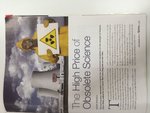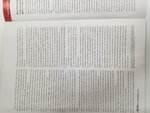Shortround6
Lieutenant General
Long term radiation hazards were far from being understood.
My favorite example was the Davy Crockett.

https://en.wikipedia.org/wiki/Davy_Crockett_(nuclear_device)
Range, depending on launcher . 1.25 miles or 2.5 miles.
"would produce an almost instantly lethal radiation dosage (in excess of 10,000 rem) within 500 feet (150 m), and a probably fatal dose (around 600 rem) within a quarter mile (400 m)"
Now which way was the Wind blowing? Final ones taken out of service in 1968.
My favorite example was the Davy Crockett.
https://en.wikipedia.org/wiki/Davy_Crockett_(nuclear_device)
Range, depending on launcher . 1.25 miles or 2.5 miles.
"would produce an almost instantly lethal radiation dosage (in excess of 10,000 rem) within 500 feet (150 m), and a probably fatal dose (around 600 rem) within a quarter mile (400 m)"
Now which way was the Wind blowing? Final ones taken out of service in 1968.


